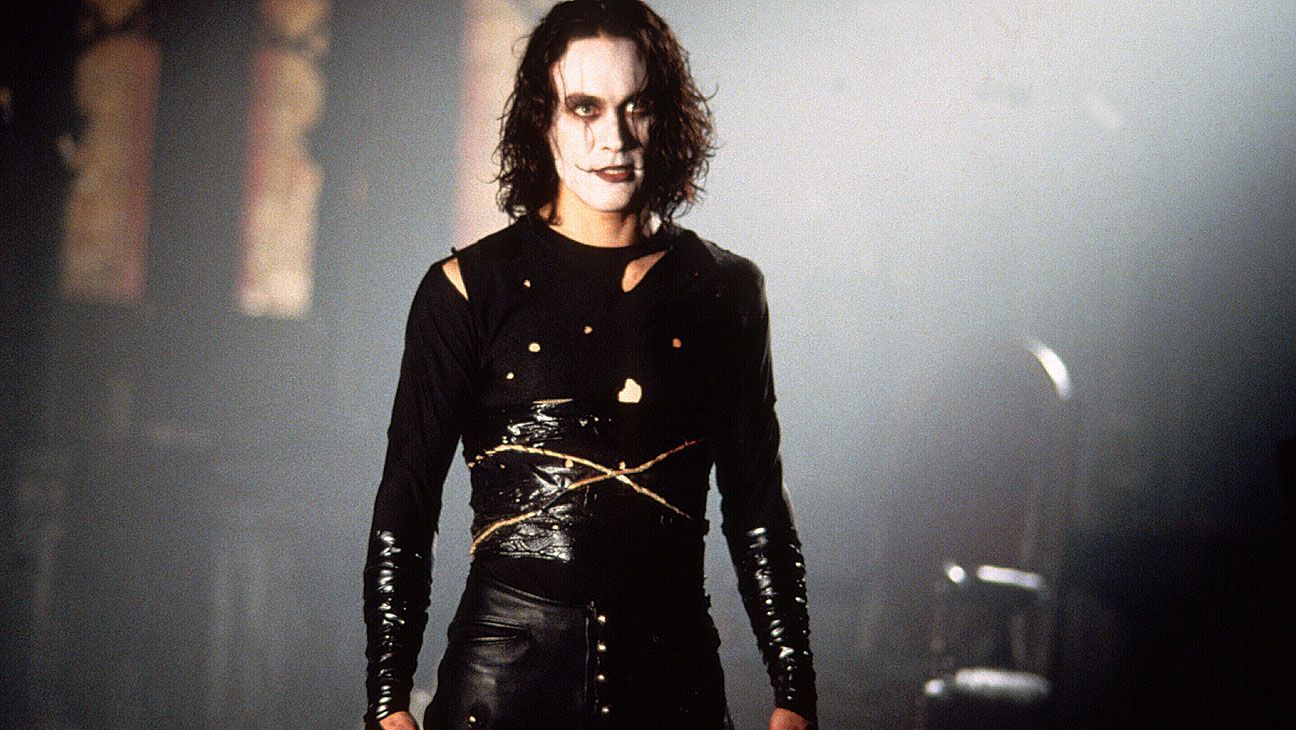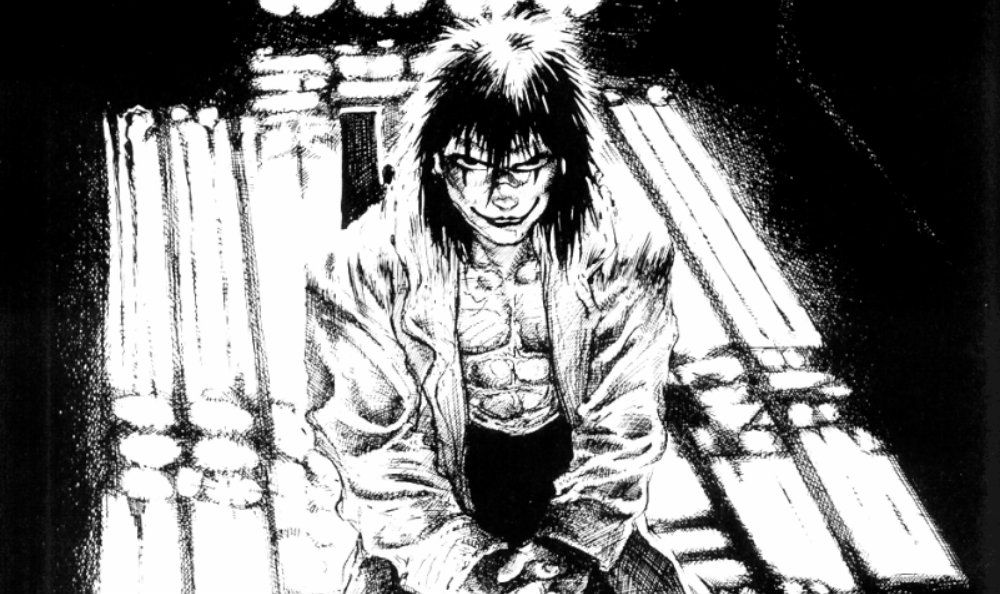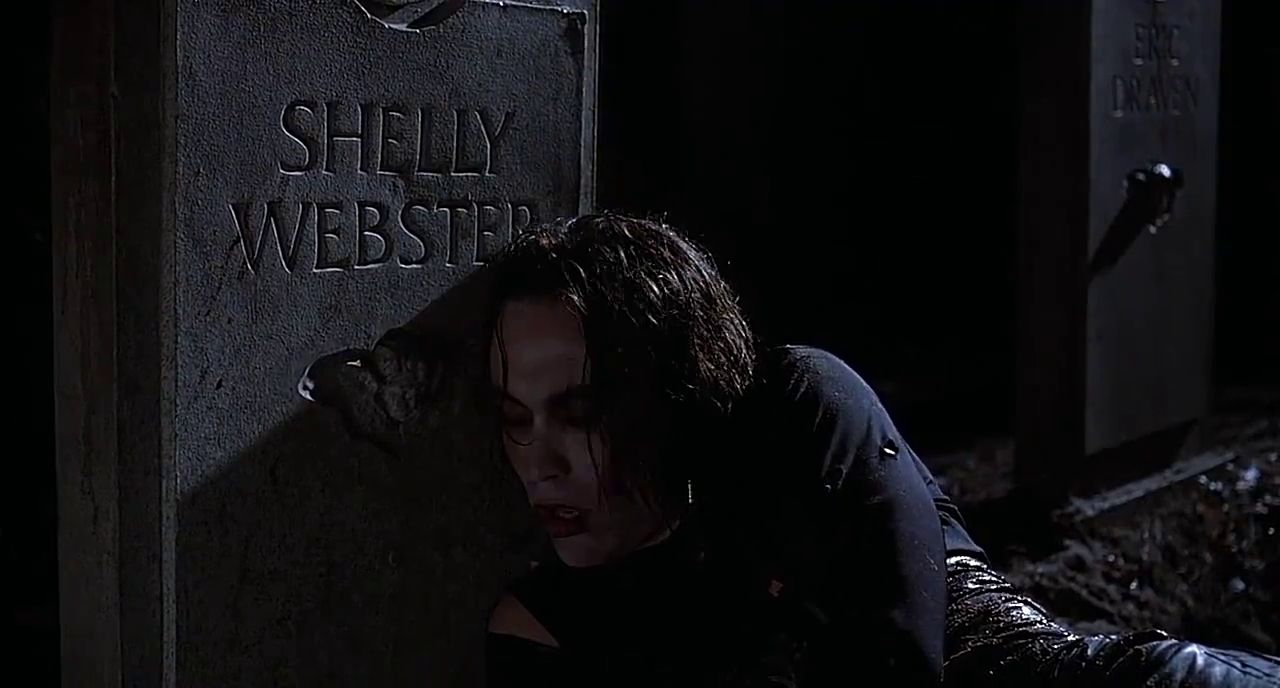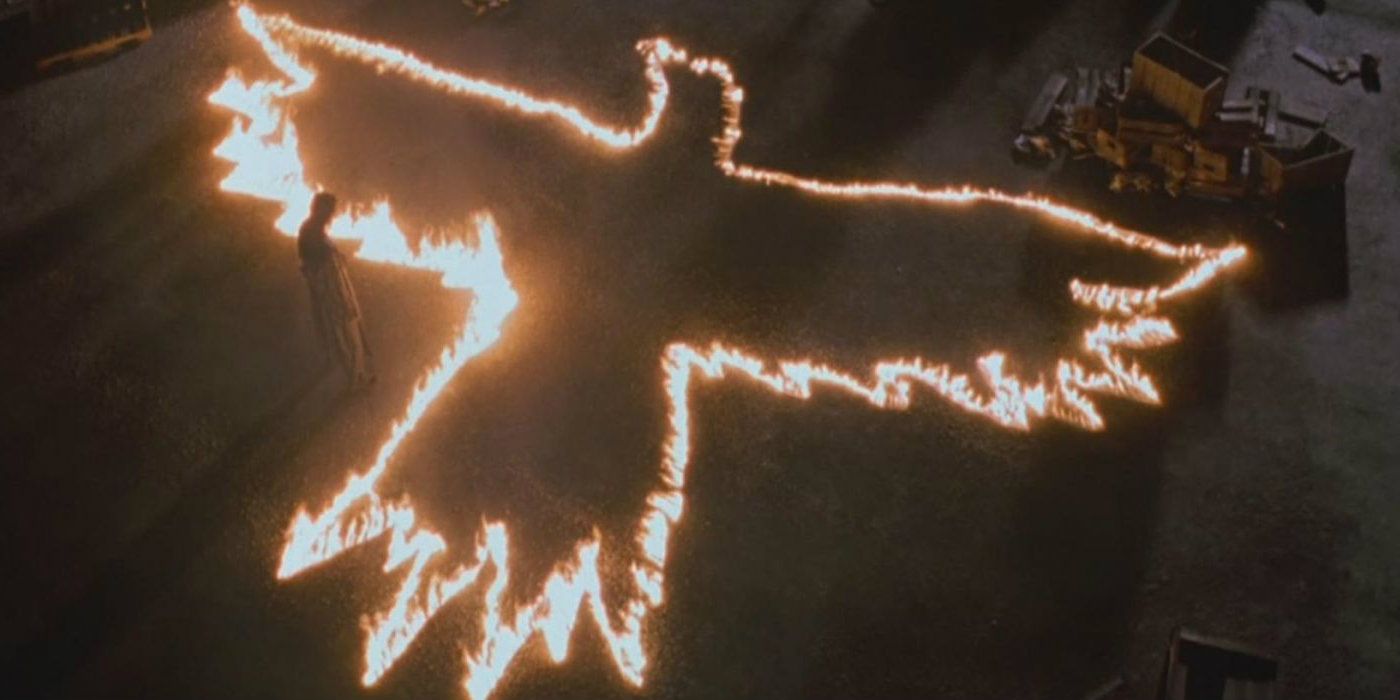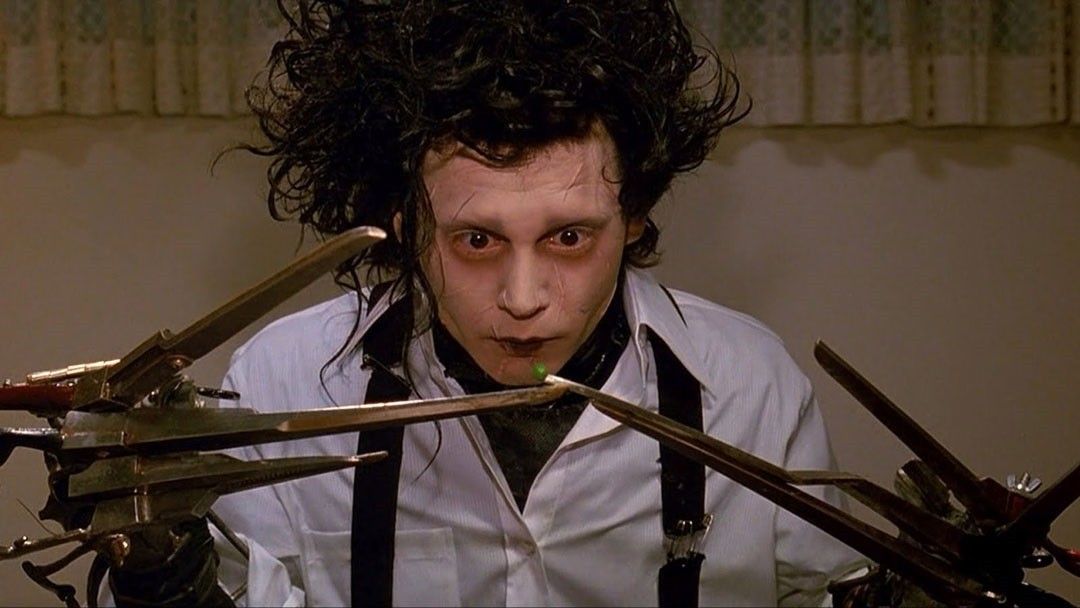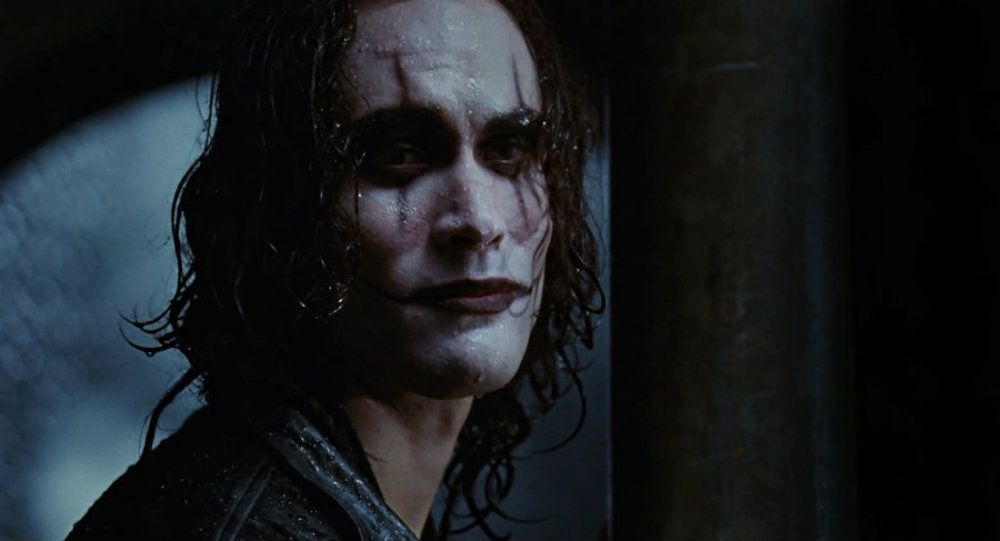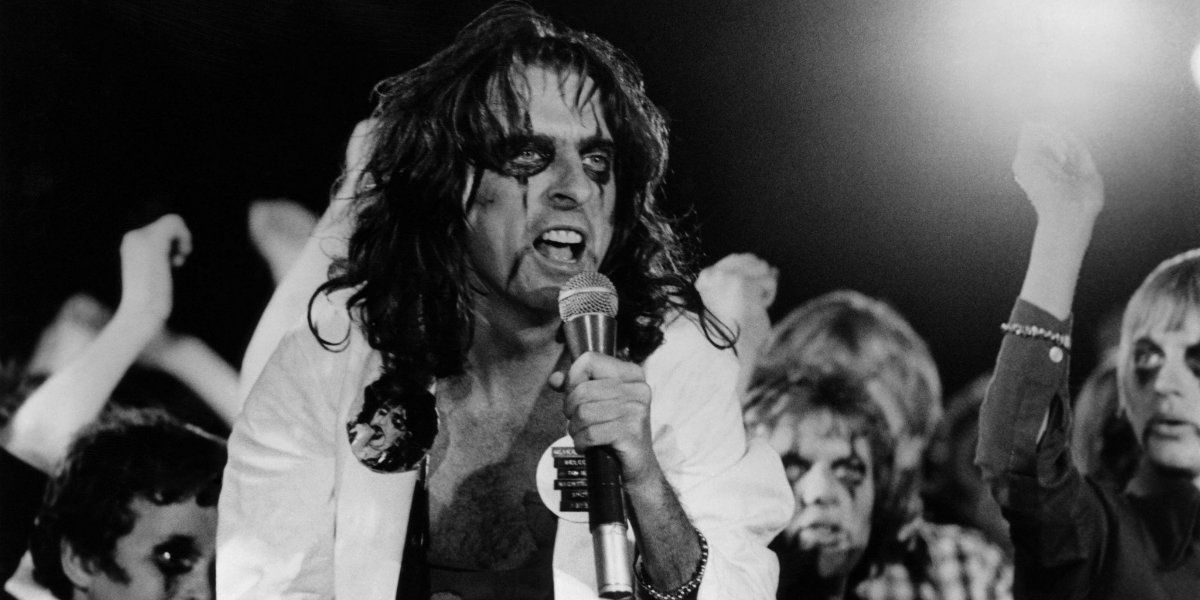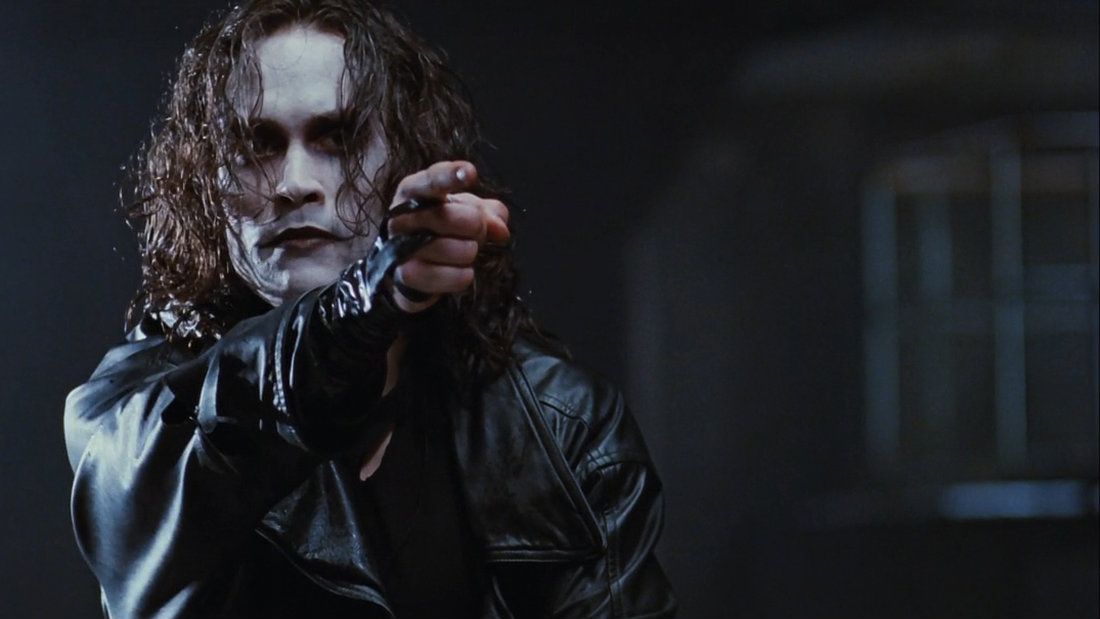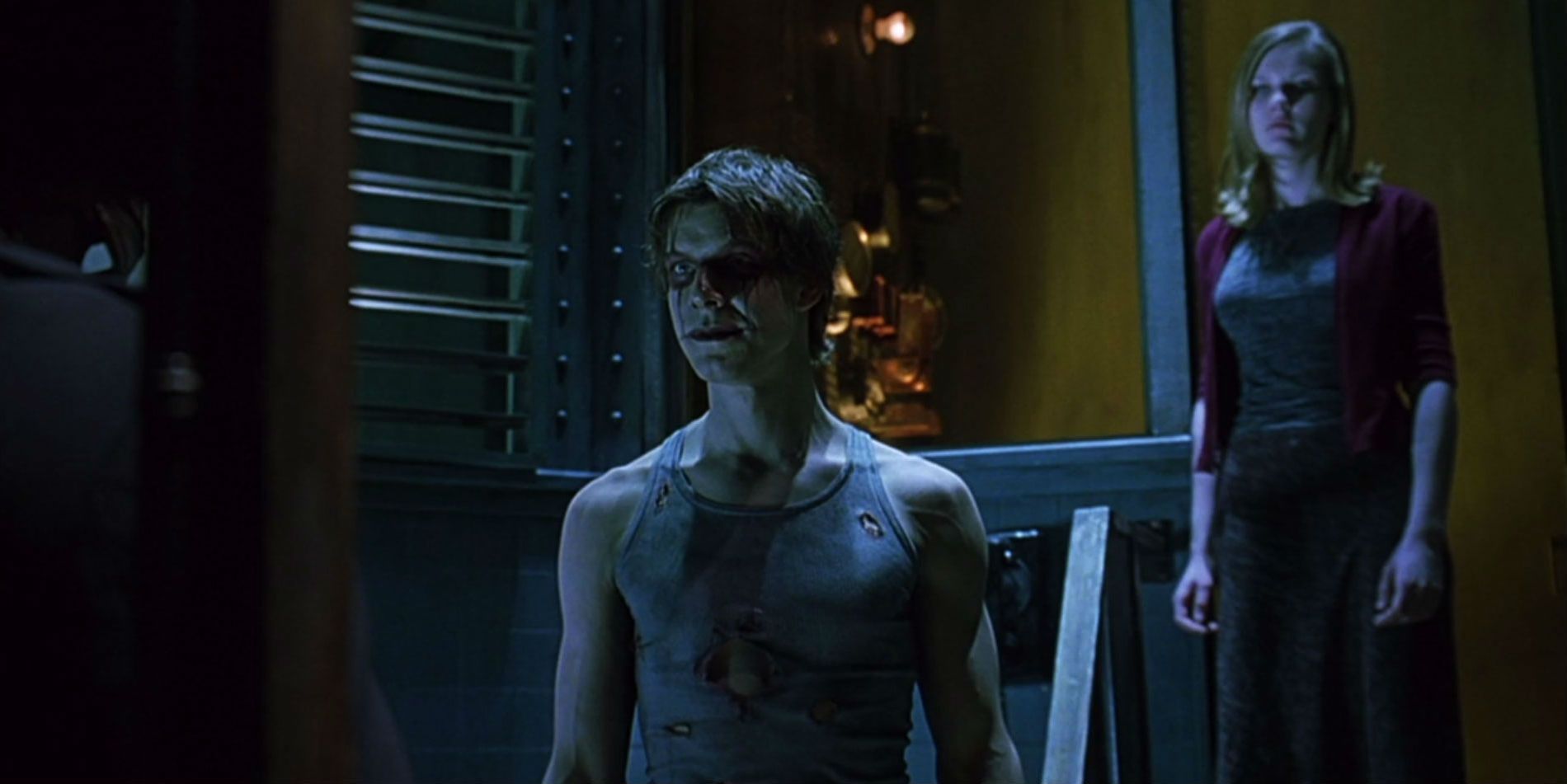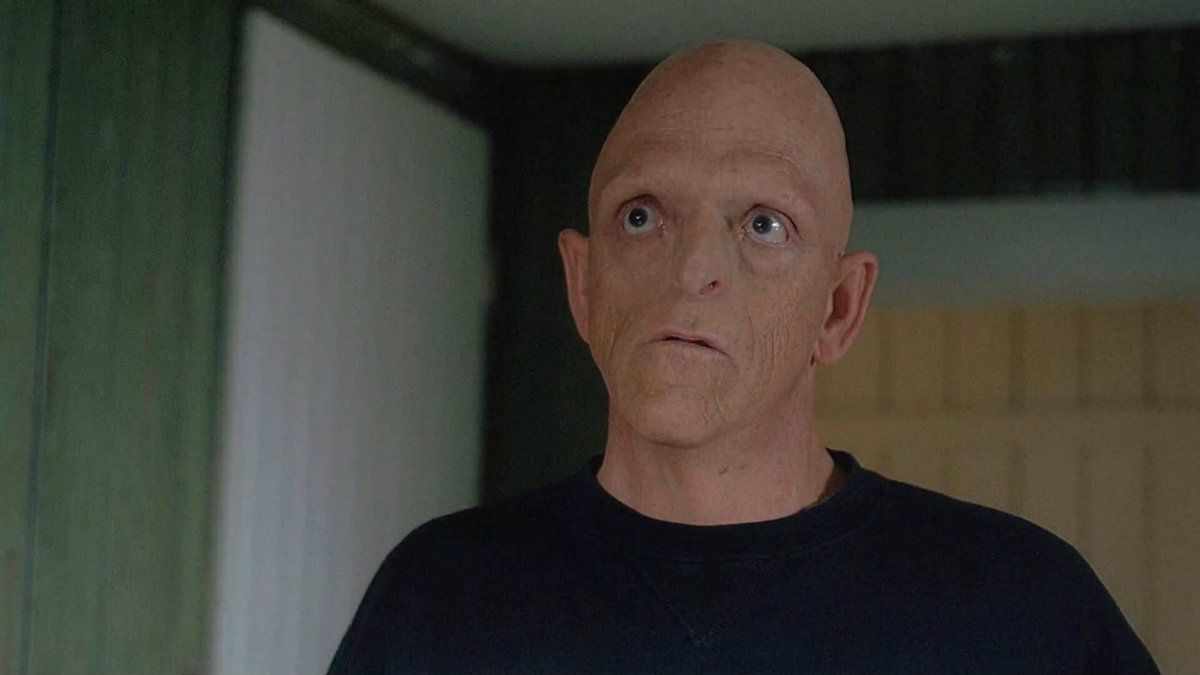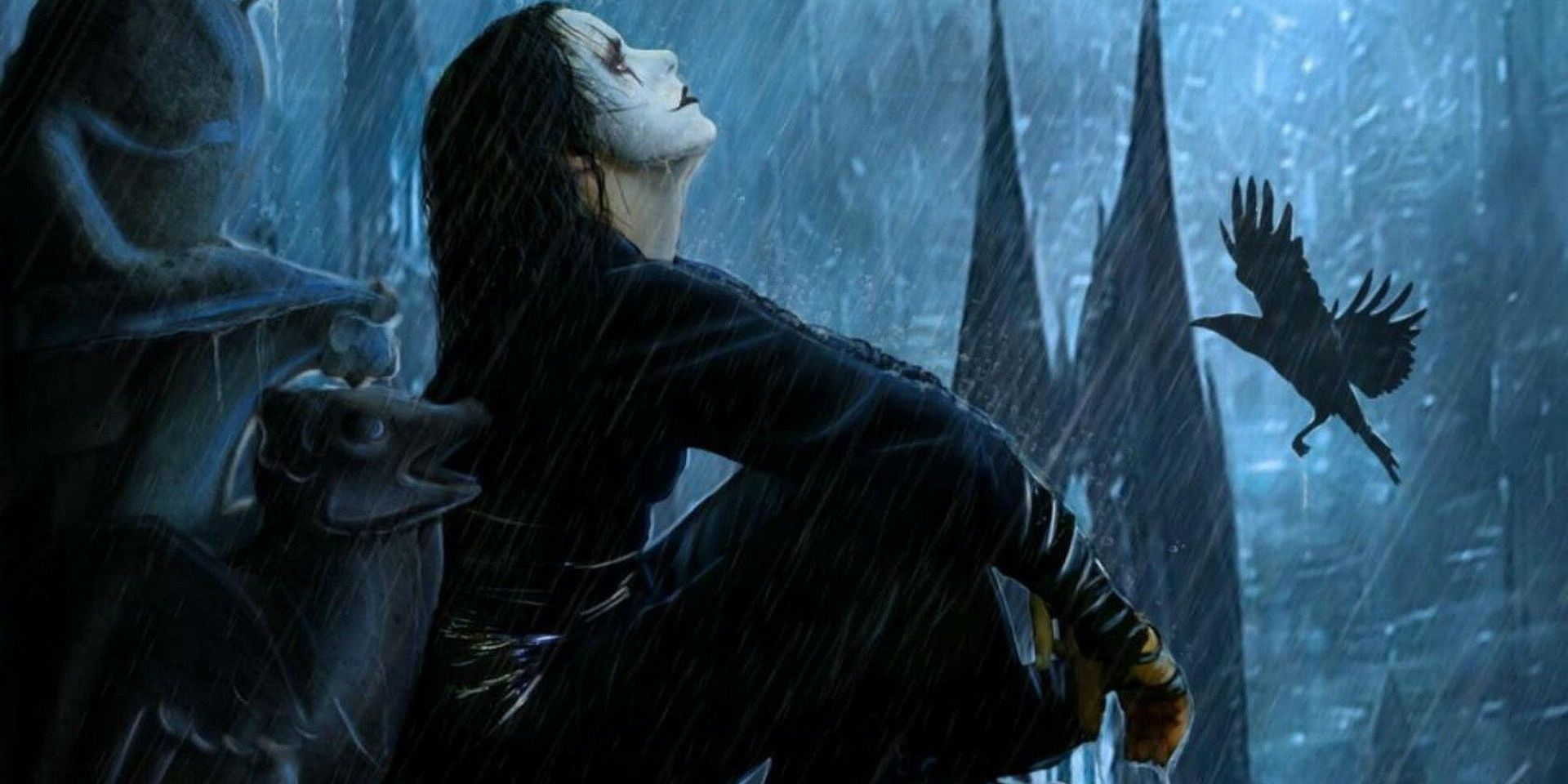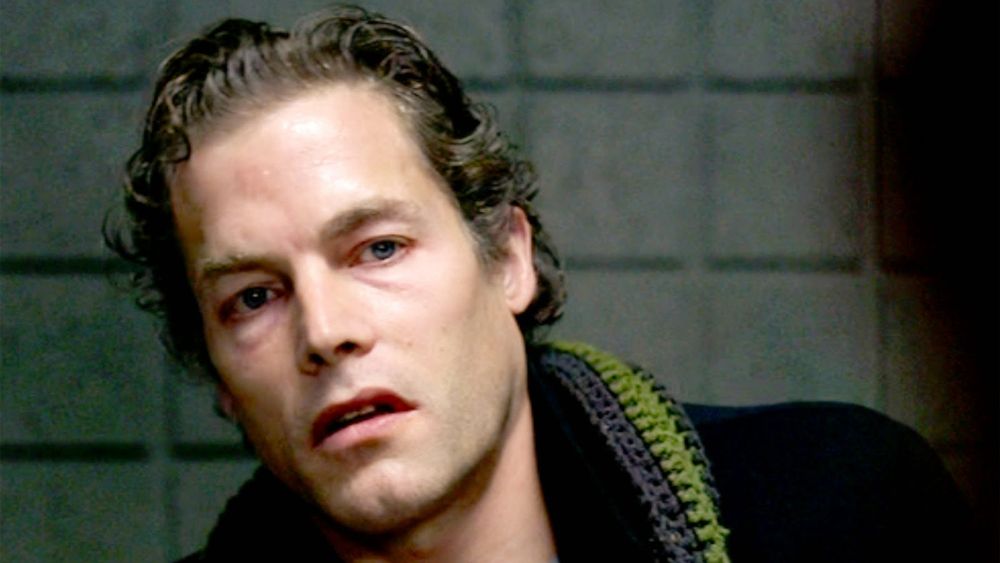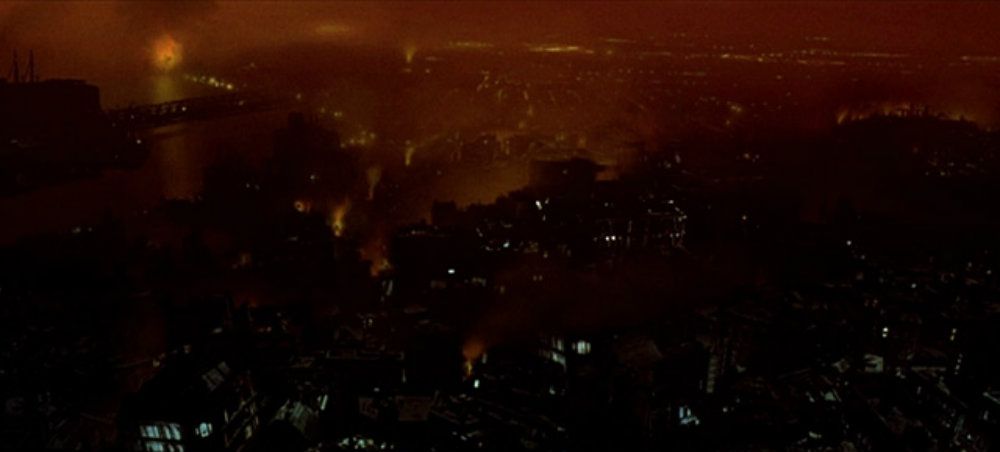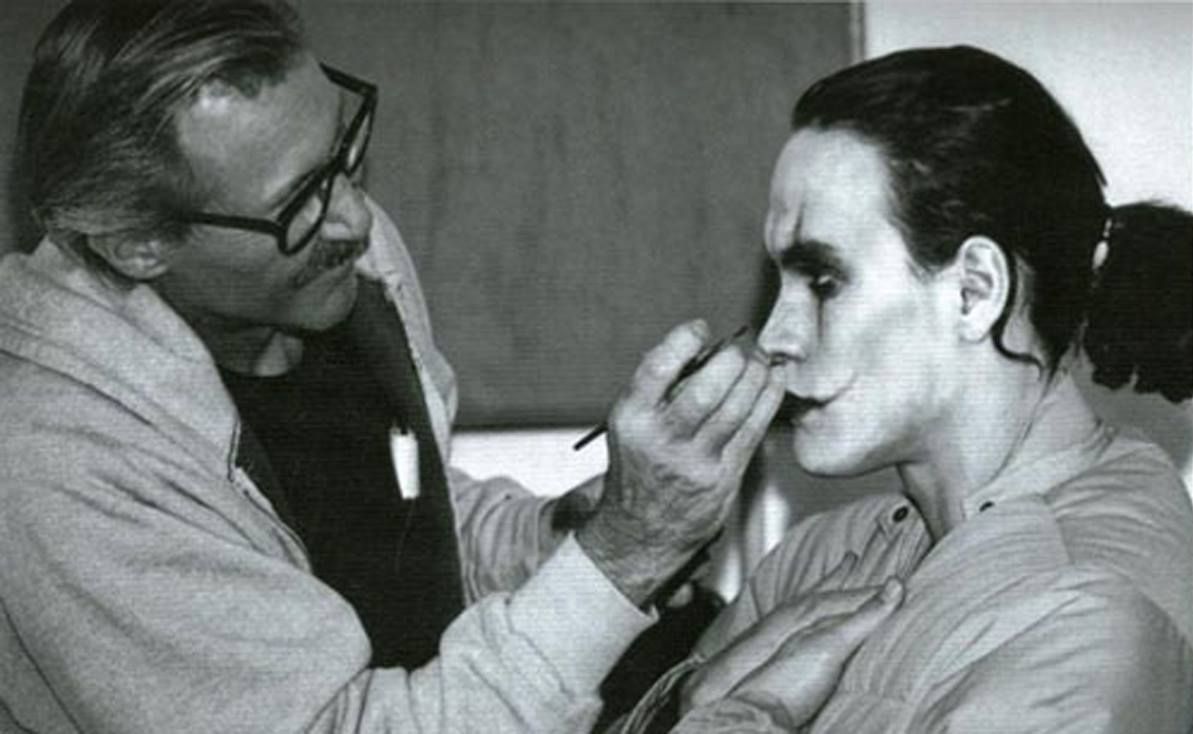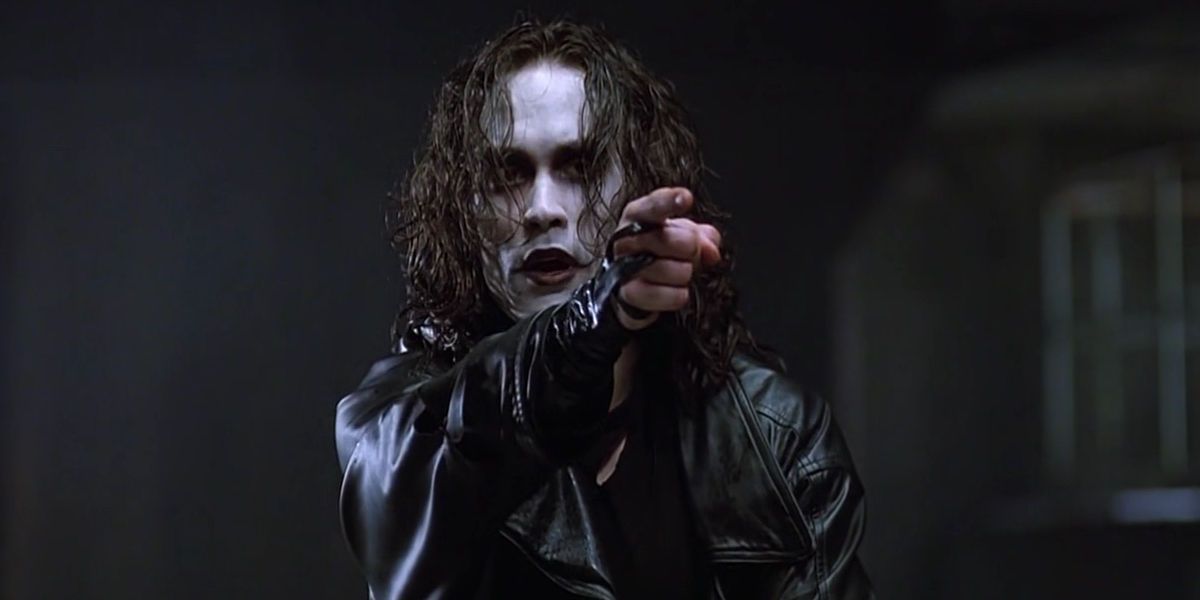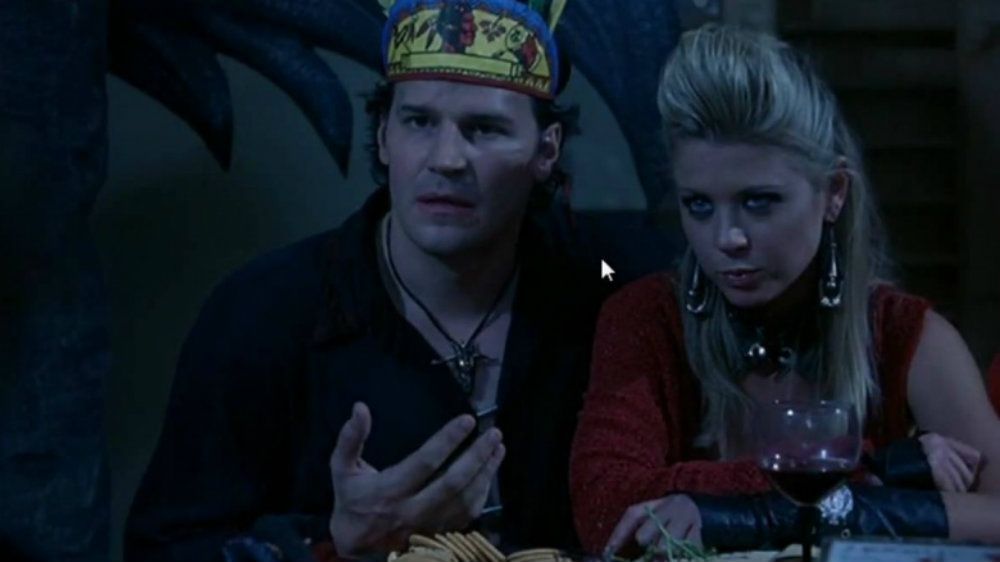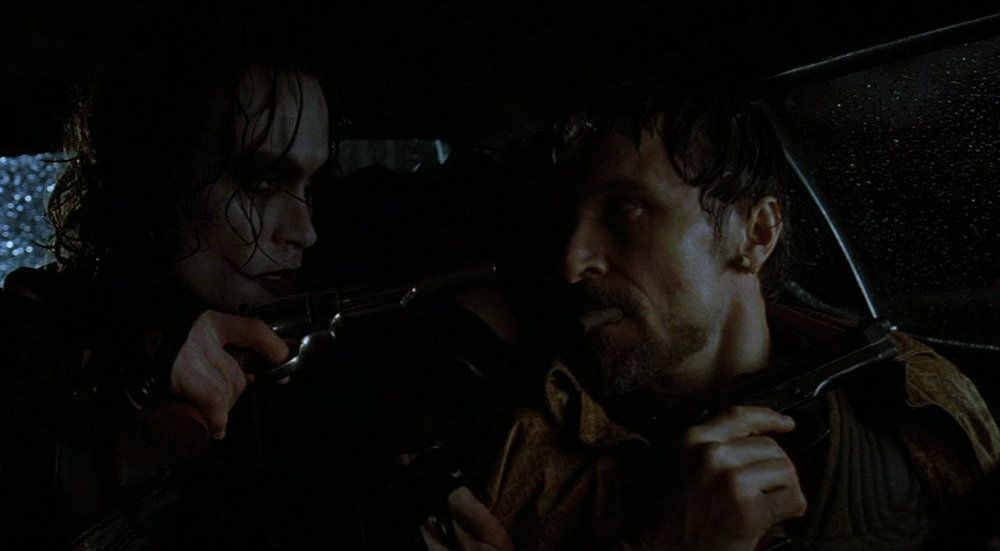Based on James O'Barr's comic book, 1994's The Crow was a groundbreaking work of stylistic fantasy action. Simultaneously blending elements of the past while also pioneering a new style of movies for the future, Alex Proyas' film won over critics and audiences alike with its unique blend of dark fantasy, horror, and action, pioneering a new style of revenge film.
However, it's impossible to talk about The Crow without discussing the freak on-set accident that struck down a rising star in his prime. Brandon Lee, son of martial arts legend Bruce Lee, was just beginning his ascent to what was certainly going to be a long and acclaimed career when a weapon malfunctioned while filming a scene and claimed his life during what was only his third American film role. Lee's passing definitely hangs heavy over the movie, but The Crow has also been praised for serving as a wonderful tribute to the late actor and will always be a monument to the impact he had already made during his all-too-brief career.
It's hard to dig into the making of The Crow and not get too distracted-- and depressed-- by what happened to Lee to research much else about it, but the story behind the film is a fascinating one even apart from that event. Below, we look at a lot of interesting and bizarre facts about the production of The Crow, from the franchise's birth as a comic book series to its long, difficult road to Hollywood.
Here are 20 Crazy Details Behind The Making Of The Crow.
It's Based On A Comic Book With A Tragic History
It's probably not a huge surprise that the creation of The Crow came from a place of real pain and mourning.
James O'Barr conceived of the Crow character and story after losing his fiancee when he was only 18.
O'Barr said that the process of creating the comic book-- which, according to O'Barr, is the best-selling black and white indie comic of all time-- was a way to cope with the passing of his fiancee and help to find a sense of closure.
He explained that he realized all of the other ways he had tried to deal with his grief were ultimately just numbing his pain, and it wasn't until he found a creative outlet that he was finally able to start truly healing.
It's Also Based On A Real Crime
According to Jeff Connor's book The Crow: The Movie, which chronicles various facets of the film and its origins, James O'Barr was moved by another tragedy that would inform his new comic book-- a couple being robbed for their engagement ring, with the thief needlessly taking their lives in the process.
O'Barr said that the sad story inspired Eric Draven's mission of revenge after becoming the Crow, and the things that Draven would do in order to set right the injustice that ultimately drove him and his love apart.
"That became the beginning of the focal point... the idea that there could be a love so strong... and this soul would not rest until it could set things right," he explained.
The Birds In The Movie Aren't REALLY Crows
Some birds are less trainable than others, and crows aren't typically a species of bird known for their ability to work on command-- not to mention that fact that crows aren't particular fond of people at best, and are physically aggressive towards them at worst.
Animal trainer Larry Madrid was brought aboard on The Crow and decided that ravens would be a suitable substitution for crows given their intelligence, ability to be trained, and better demeanor with humans. Plus, would the average person even known the difference anyway, especially given that much of the film is shrouded in darkness?
Only five real ravens were actually used during the production-- mostly for close-ups and the like-- with wide shots and scenes with larger flocks of birds relying on special effects trickery.
Other People Were Considered For The Lead Role
Even though The Crow was a fairly low-budget affair, it still had a cast of established actors and would've definitely benefited from an A-list lead.
Interestingly, because of the original comic's rock music influence and its many references to real musicians, producers initially considered casting a musician in the role of Eric Draven, thinking that a rocker would be a good fit for the obviously rock-and-roll-inspired anti-hero.
O'Barr had different ideas. Obviously, you want to shoot for the moon when dream-casting a movie based on something you wrote.
O'Barr was thinking that Johnny Depp, Christian Slater, and River Phoenix would've all been good fits for the lead.
Ultimately, Brandon Lee was chosen in large part because he had the physicality necessary for the role in addition to the acting chops.
There Are Many Misconceptions About The Tragic Accident
When someone leaves this world during the filming of a movie, there is bound to be all manner of myth and exaggeration that surrounding the event-- and Brandon Lee's passing is certainly no exception, with much false information being perpetuated about the incident over the years.
One of the most persistent rumors is that the moment that Lee lost his life as the result of a malfunctioning gun can be seen during the movie.
This is patently false, and in fact, great lengths seem to have been gone through to ensure that footage never be leaked. Additionally, many have claimed that Lee's life was lost instantly, but the reality is that he went through six hours of surgery before he ultimately lost his battle.
It was one of many accidents on set
While what happened to Brandon Lee is no doubt the biggest tragedy that occurred during the making of The Crow, the production had already been beset by accidents and injuries even before that unfortunate accident.
Among the incidents that took place on the set of The Crow were a carpenter driving a screwdriver through his hand, a stuntman falling through a roof, a disgruntled fired crewmember driving his car into an on-set workshop, an injury caused by a crane hitting live power lines, and a bad storm destroying large portions of the set.
Whether you believe in curses or not, this seems like a lot of mishaps to occur during the making of a movie.
Finishing Without Lee Was Expensive
Brandon Lee was only scheduled to film for three more days when he was taken from us, which doesn't seem like much in terms of getting enough footage to finish the movie but involved a few pivotal shots that just couldn't be done without.
After original distributor Paramount dropped The Crow following Lee's passing, Miramax stepped up to produce the movie.
The studio pitched in $8 million for whatever was necessary in terms of digital trickery to get Lee's uncompleted scenes finished.
It ended up accounting for a third of the movie's entire budget, and involved cutting-edge technology-- the first of its kind to ever be used in a movie-- for a production that had been largely modest and low-fi up to that point.
Where the Iconic Make-Up came from
For anyone who read James O'Barr's original comics-- or picked up on the theatrical rock-and-roll vibe of the movie-- it seemed pretty obvious that the Crow's makeup was inspired by '70s rockers KISS and/or Alice Cooper, with the latter's performance make-up coming remarkably close to the Crow's painted look.
According to O'Barr himself, however, neither is true.
O'Barr borrowed the look and style of the Crow's make-up from a marionette mask he had seen on a sign on a London theater.
It turns out the mask just fit the rock vibe of the story, rather than the other way around.
The Crow's make-up and vibe would later do some inspiring of its own, as it heavily informed the re-branding of wrestler Sting in the mid-1990s.
Brandon Lee Asked For An Offensive Character To Be Removed
According to director Alex Proyas, Brandon Lee gave a lot of creative input on the script for The Crow, which Proyas says he was always open to as Lee had a lot of really interesting and valuable ideas-- many that involved trying to bring the movie closer to the tone of the original comic.
One of the biggest changes to the script that Lee himself is responsible for was the complete removal of an entire character: a villain who would've had the ability to steal Eric Draven's Crow powers.
Seeing the character as little more than a one-note Asian stereotype, Lee requested the character's removal-- and ended up getting his way. That's some progressive stuff for a movie made nearly 25 years ago.
James O'Barr Felt Guilty Profiting From The Movie
James O'Barr ended up feeling a lot of guilt about the movie adaptation of his work leading to the passing of Brandon Lee, not only because it was tragic in general but also because the pair had become friends during the making of the movie.
In fact, O'Barr would later reveal that he donated most of the money he received from the movie to charity, only buying his mother a car and treating himself to a surround sound system for his house before giving the rest away.
O'Barr says he tried to hide that fact from the public for many years, as he feels that giving to charity shouldn't be about announcing that you did so and that "it's not charity if you get credit for it."
The planned sequel
While director Alex Proyas didn't return for any of the Crow sequels-- a fact which becomes apparent to anyone who has tried to watch them-- he hadn't ruled out the idea of a Crow 2 while he was shooting the first one.
"It wasn't utmost in my [mind] to create a franchise, but I was aware that it could do that, and you don't want to make that impossible. You can see all the elements there," Proyas explained during his commentary track on The Crow's DVD release.
He seems to suggest that Lee's passing immediately meant he had no interest in doing another without him, saying "I would have been delighted to make The Crow 2... if Brandon had been involved."
Proyas has also been extremely outspoken against the planned Crow reboot, saying it feels disrespectful to Lee's legacy.
A Character Was Cut Following Lee's Passing
Brandon Lee's passing during the making of The Crow affected far more than the scenes that had to be completed without him. It also led to another major character being cut from the movie, one who had already had several scenes filmed.
Skull Cowboy, played by veteran character actor Michael Berryman, was to be something of a spirit guide for the Crow.
Alex Proyas said that the character was unnecessary and "cheesy" and he wasn't fond of him anyway. With his most important scenes yet to be shot and requiring heavy interaction with Lee, it was determined that just cutting the character altogether was the best option.
It Wasn't A Huge Box Office Hit
By any measure, The Crow was profitable at the box office, earning back more than double its production costs at a time when a movie didn't need to quadruple its budget just to break even.
It was hardly the smash hit that it seems now, given how popular it was and still is and how influential it has been.
Like most cult hits of the time, The Crow would end up finding the bulk of its sizable fandom via home video releases and through television airings, more than making up for only being a modest success in theaters. It would also prove to be the kind of movie that people happily re-purchased once DVDs became popular, hoping to get an even better look at the movie's lush production and further adding to its lifetime tally.
It Haunted One Actor For The Rest Of His Life
We tend to forget that someone had the misfortune of being the person who actually pulled the trigger on the gun that he thought was just loaded with safe blanks but ended up taking Brandon Lee's life. That actor was Michael Massee, and despite a career that spanned several more decades and a lot of acclaimed work, that accident always haunted his life and career.
Massee has said that he had nightmares about the incident for years, had to take a break from acting, and had never been able to actually sit down and watch The Crow.
When Massee himself passed away in 2016, many news outlets referred to him primarily as the guy involved in Brandon Lee's demise despite him appearing in over 50 movies and TV shows since then.
Miniatures sets were used
The Crow feels like a big, expensive Hollywood production-- for its time, anyway-- and much of the credit for that goes to Alex Proyas' clever directing as well as a creative use of existing locations for sets.
The truth is that the movie initially only had a budget of about $15 million, which isn't very much for a stylistic action fantasy movie.
One of the ways that the producers cut costs is through the use of miniatures which, while more work from a man hour standpoint, costs far less money in the long run.
The opening shots of a Detroit on fire, for instance, were done entirely in miniature.
Even the movie's big car chase was shot with heavy use of miniatures over real cars on real streets.
The Make-Up process was more complicated than it seemed
It seems simple enough, white face paint with black accents-- how hard could that have been to apply for each day of filming? As it turns out, much harder than you might realize.
For starters, the black accents had to be identical each time they were applied so as to not cause any continuity issues between scenes. To achieve this, a rubber mask had to be created with slits where the accents would go to serve as a sort of stencil, ensuring that everything looked exactly the same each time.
The whole process took upwards of an hour for reach re-apply, which doesn't sound like much but can really add up when you're needing to touch it up sometimes multiples times a day.
The cameo we missed
The Crow comic creator James O'Barr was heavily involved with the making of the movie, both during the pre-production phase and while it was being filmed. He was a regular fixture on the set and can be seen in a lot of behind-the-scenes photos and video of the making of the movie.
Of course, since O'Barr was already there on set so much anyway, he got to make the token original creator cameo in the film.
Rather than just being some far-off background character you have to squint to see, O'Barr has a few moments of prominent screen time as he plays a looter during a riot scene. It's not a huge part, but it's a lot more than many original creators of movie properties get.
The Script Took Two Years To Write
While the turnaround time between the original publication of The Crow comic book and the release of the movie adaptation was fairly quick - only five years - it actually could've happened even sooner if the script wasn't so hard to get just right.
Original script writer John Shirely-- known primarily for his work in print-- had spent a fair amount of time crafting the movie but wasn't quite pulling it together. He was eventually joined by David J. Schow (Critters 2 and 3, Leatherface) who brought in some of the darker, more horror-flavored elements.
In total, the script was said to have spent at least two years as a work in progress before a shooting script was settled on between the two co-writers.
The Original Creator Almost Gave Up The Rights For Life
If you created something, and were approached by a company offering you money to buy the rights to it, would you know what was or wasn't a fair deal? Most of us wouldn't, which is what James O'Barr was facing when he was first given an offer to sell the rights to The Crow.
Initially, O'Barr says that someone had offered to purchase all of the rights to The Crow in perpetuity for one lump sum-- which would've meant he had no say over it or wouldn't be able to receive any future royalties on it.
Not being in great financial shape at the time, he nearly agreed, but was luckily talked out of it by his friends.
To think that he would've missed out on getting royalties from future sequels starring Edward Furlong and Tara Reid....
The unexpected methor actor
Actor David Patrick Kelly is no stranger to appearing in beloved cult hits, first gaining fame as the main antagonist in The Warriors and going on to appear in Twin Peaks and, of course, The Crow. He seems like the kind of actor that goes all-in no matter what project he is in, as evidenced by the lengths he went to to get into the character of T-Bird in The Crow.
The epic poem Paradise Lost influenced the production of The Crow pretty heavily-- Alex Proyas is such a fan that he attempted to adapt it into a movie in the early-2010s.
Kelly turned to the poem to inform his portrayal of T-Bird, going so far as to buy a vintage printing of the poem and then reading his actual copy in a scene of the movie.
---
Do you have other trivia to share about The Crow? Let us know in the comments!

